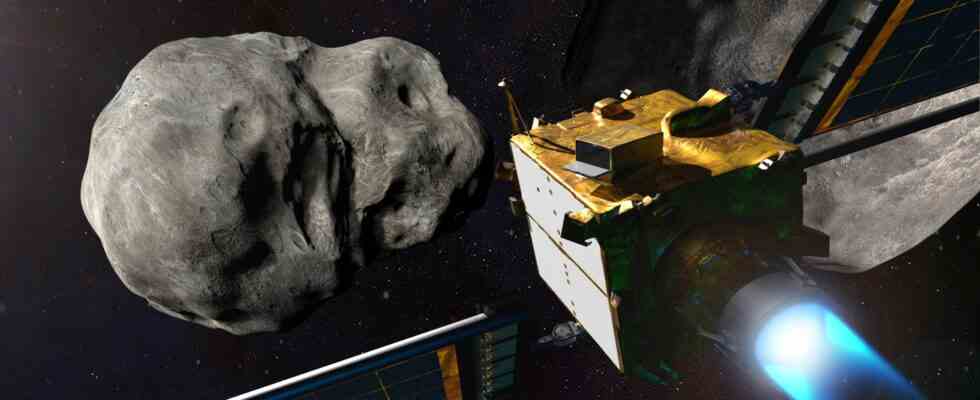Status: 10/11/2022 9:43 p.m
Cheers at NASA: The US space agency has succeeded for the first time in changing the direction of movement of an asteroid. This was the result of evaluations two weeks after the spectacular collision of the DART probe with the asteroid Dimorphos.
According to the US space agency NASA, the first intentionally caused collision of a space probe with an asteroid was successful: NASA boss Bill Nelson said that the impact of the DART probe in September had reduced the orbit of the asteroid moon Dimorphos.
While it used to take Dimorphos eleven hours and 55 minutes to orbit its big brother Didymos, it now takes eleven hours and 23 minutes. “We showed the world that NASA is a serious defender of this planet,” Nelson said.
Probe the size of a vending machine
At a speed of around 6.6 kilometers per second, the cube-shaped DART probe the size of a vending machine crashed into the asteroid Dimorphos, which is about the size of a football stadium, at the end of September. It was a rehearsal for defending against an asteroid on a collision course with Earth. However, Dimorphos posed no threat.
In order to steer a dangerous asteroid past the earth in an emergency, only minimal course changes would be necessary with early intervention. NASA’s goal was to shorten Dimorphos’ orbit by up to ten minutes. This goal has now been significantly exceeded: the reduction is 32 minutes.
“Turning Point”
NASA chief Nelson called the mission’s success a “watershed moment” in protecting humanity from an asteroid impact. In the coming weeks and months, the impact of the collision will now be further investigated. In 2024, the similar mission “Hera” of the European Space Agency ESA will start for more detailed research.
The question of how to defend against an asteroid has been a concern for NASA and researchers around the world for many years. An asteroid impact around 66 million years ago, for example, is considered by scientists to be the leading theory as to why the dinosaurs became extinct. Scientists don’t currently know of any asteroid that could be heading straight for Earth any time soon – but researchers have identified around 27,000 asteroids near our planet, around 10,000 of them with a diameter of more than 140 meters.

